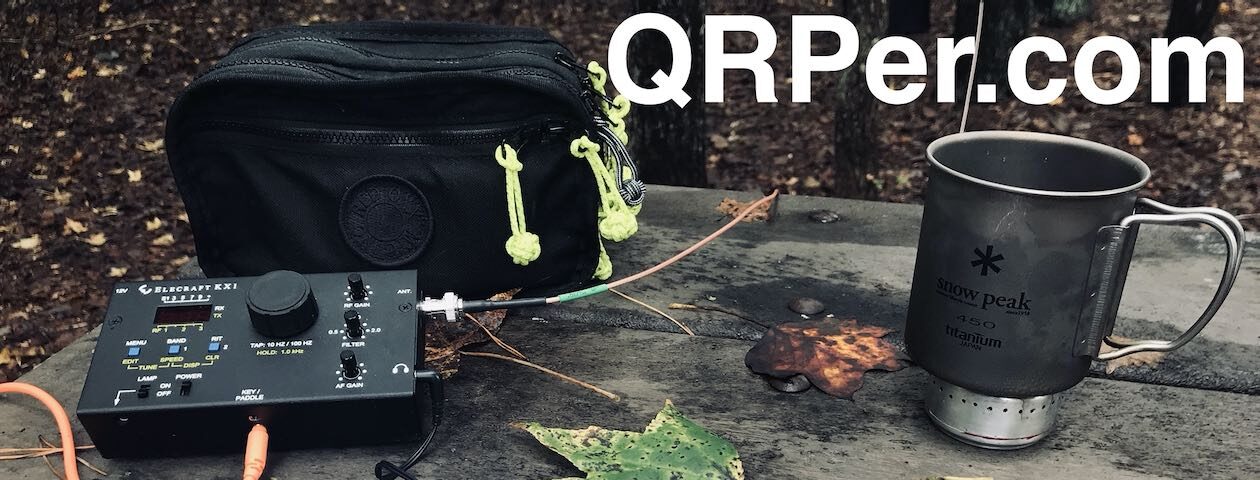My buddy Jonathan (KM4CFT) made a big announcement this morning.
He’s been working tirelessly since the start of the year, designing and testing a brand-new field-portable CW transceiver he’s dubbed the CFT1.
As of this morning, you can purchase the transceiver kit on HamGadgets.com.
A little backstory
Jonathan first mentioned his plans to design a CW transceiver back when we were doing a joint POTA activation at the end of December 2023. At the time, it was just an idea. When he said he planned to have it ready for sale in 2024, I was skeptical. I mean, he had a day job and had never designed a radio before. How could he pull that off in such a short timeframe?
Fast forward to Four Days in May/Hamvention in May 2024, and wouldn’t you know it, Jonathan had a working prototype on display! I was blown away. Within a couple of weeks, he was contacting us beta testers, eager to get revision one units into our hands.
I got my CFT1 in June and immediately put it through its paces in the shack. Even in beta, this little radio was rock solid – I was seriously impressed!
I thoroughly tested the CFT1 in the shack, both on a dummy load and with my QTH antenna. If you’re into SOTA or POTA and I worked you in June, chances are it was with the CFT1.

I even took the CFT1 out for a spin on Field Day. Vlado (N3CZ) and I were both impressed with how well it performed in that crazy RF environment. Remember, this isn’t a contest radio, but it didn’t seem to overload at all. Impressive!
When I heard Jonathan was launching the CFT1 today, I figured I’d do a quick POTA activation to showcase this awesome little radio.
The Blue Ridge Parkway (US-3378)
 Yesterday morning, I was heading to Mission Hospital in Asheville to visit a family member who had just been admitted. I realized I had enough time for a quick activation at the Folk Art Center on the way.
Yesterday morning, I was heading to Mission Hospital in Asheville to visit a family member who had just been admitted. I realized I had enough time for a quick activation at the Folk Art Center on the way.
I arrived at the parking lot around 8:30 AM. It was pretty empty except for the grounds crew. I set up at my usual picnic table.
I paired the CFT1 with my KM4CFT End-Fed Half-Wave, trimmed for 30M with a 40M linked extension. I was hoping for some 40-meter action early in the morning. Setup was a breeze. My throw line cooperated beautifully – the 40M EFHW was practically vertical!
Naturally, I filmed the whole process: setup, activation, and pack-up. Before I started the activation, I spent a few minutes talking about the CFT1 – its design philosophy and what I like about it. Hopefully, this will help you decide if it’s the right radio for you.
Gear:
 Note: All Amazon, CW Morse, ABR, Chelegance, eBay, and Radioddity links are affiliate links that support QRPer.com at no cost to you.
Note: All Amazon, CW Morse, ABR, Chelegance, eBay, and Radioddity links are affiliate links that support QRPer.com at no cost to you.
- CFT1 QRP Transceiver
- KM4CFT End-Fed Antenna Kit (eBay partner link)
- Homemade 10′ RG-316 Cable Assembly
- N0SA portable paddles
- Blue Ridge Overland Gear Headrest Pouch Kit
- GoRuck GR1 USA
- TalentCell Rechargeable 12V 3000mAh Battery Pack
- Weaver arborist throw line/weight and storage bag
- GraphGear 0.9mm 1000 Automatic Drafting Pencil
- Rite In The Rain Top Spiral Notebook
- Camera: DJI OSMO 4 action camera with Joby Telepod Sport Tripod
- Sony SRS-XB12 portable wireless speaker (no longer produced–eBay search) and audio patch cable
- Nemo Chipper Foam Seat
On The Air
 I spotted myself on 40 meters and started calling CQ using the CW message memory I’d already programmed with “CQ POTA DE K4SWL.”
I spotted myself on 40 meters and started calling CQ using the CW message memory I’d already programmed with “CQ POTA DE K4SWL.”
Fortunately, the band was healthy–at least, healthy enough to reply to a number of hunters. Continue reading Introducing the New CFT1 Five Band Portable CW Transceiver Kit!































































